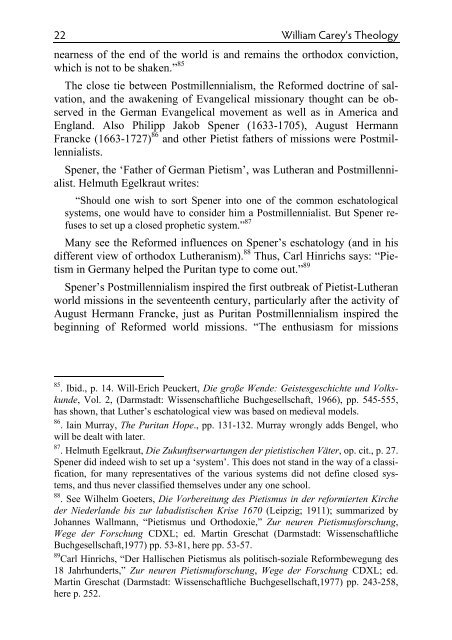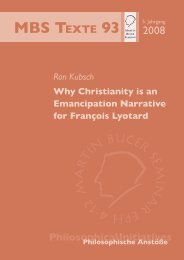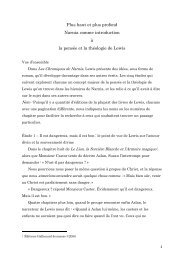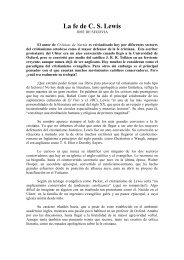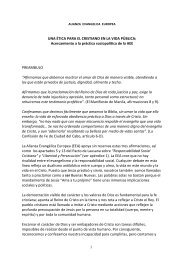William Careys Theology - World Evangelical Alliance
William Careys Theology - World Evangelical Alliance
William Careys Theology - World Evangelical Alliance
Create successful ePaper yourself
Turn your PDF publications into a flip-book with our unique Google optimized e-Paper software.
22 <strong>William</strong> Carey’s <strong>Theology</strong><br />
nearness of the end of the world is and remains the orthodox conviction,<br />
which is not to be shaken.” 85<br />
The close tie between Postmillennialism, the Reformed doctrine of salvation,<br />
and the awakening of <strong>Evangelical</strong> missionary thought can be observed<br />
in the German <strong>Evangelical</strong> movement as well as in America and<br />
England. Also Philipp Jakob Spener (1633-1705), August Hermann<br />
Francke (1663-1727) 86 and other Pietist fathers of missions were Postmillennialists.<br />
Spener, the ‘Father of German Pietism’, was Lutheran and Postmillennialist.<br />
Helmuth Egelkraut writes:<br />
“Should one wish to sort Spener into one of the common eschatological<br />
systems, one would have to consider him a Postmillennialist. But Spener refuses<br />
to set up a closed prophetic system.” 87<br />
Many see the Reformed influences on Spener’s eschatology (and in his<br />
different view of orthodox Lutheranism). 88 Thus, Carl Hinrichs says: “Pietism<br />
in Germany helped the Puritan type to come out.” 89<br />
Spener’s Postmillennialism inspired the first outbreak of Pietist-Lutheran<br />
world missions in the seventeenth century, particularly after the activity of<br />
August Hermann Francke, just as Puritan Postmillennialism inspired the<br />
beginning of Reformed world missions. “The enthusiasm for missions<br />
85 . Ibid., p. 14. Will-Erich Peuckert, Die große Wende: Geistesgeschichte und Volkskunde,<br />
Vol. 2, (Darmstadt: Wissenschaftliche Buchgesellschaft, 1966), pp. 545-555,<br />
has shown, that Luther’s eschatological view was based on medieval models.<br />
86 . Iain Murray, The Puritan Hope., pp. 131-132. Murray wrongly adds Bengel, who<br />
will be dealt with later.<br />
87 . Helmuth Egelkraut, Die Zukunftserwartungen der pietistischen Väter, op. cit., p. 27.<br />
Spener did indeed wish to set up a ‘system’. This does not stand in the way of a classification,<br />
for many representatives of the various systems did not define closed systems,<br />
and thus never classified themselves under any one school.<br />
88 . See Wilhelm Goeters, Die Vorbereitung des Pietismus in der reformierten Kirche<br />
der Niederlande bis zur labadistischen Krise 1670 (Leipzig; 1911); summarized by<br />
Johannes Wallmann, “Pietismus und Orthodoxie,” Zur neuren Pietismusforschung,<br />
Wege der Forschung CDXL; ed. Martin Greschat (Darmstadt: Wissenschaftliche<br />
Buchgesellschaft,1977) pp. 53-81, here pp. 53-57.<br />
89 Carl Hinrichs, “Der Hallischen Pietismus als politisch-soziale Reformbewegung des<br />
18 Jahrhunderts,” Zur neuren Pietismuforschung, Wege der Forschung CDXL; ed.<br />
Martin Greschat (Darmstadt: Wissenschaftliche Buchgesellschaft,1977) pp. 243-258,<br />
here p. 252.


